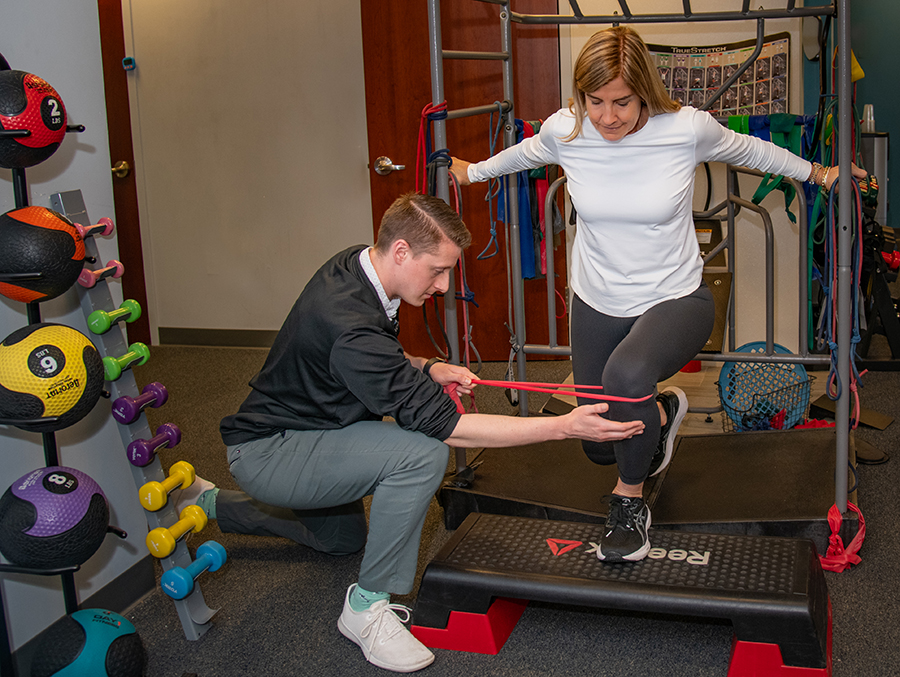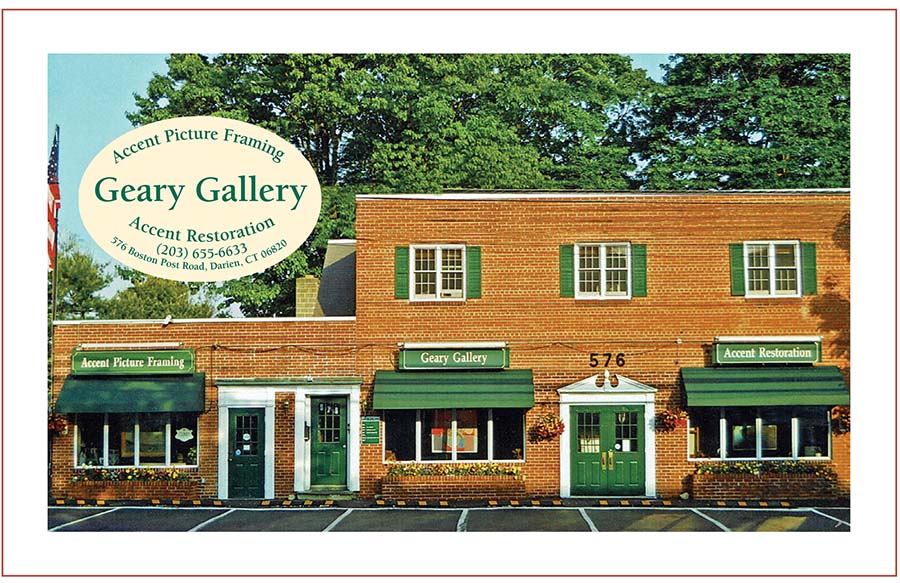Hurting, Healing and Getting Back At It
Mind Set | written by: MIKE GIAMBRONE, PT, DPT, OCS of Elevate Physical Therapy | photo by: BAMBI RIEGEL riegelpictureworks.com

Mike at Elevate Physical Therapy working with Karen Schrenker who recently underwent knee replacement surgery (used by permission)
Editor’s note: When injury strikes—on the field, the court or in our daily rounds, or the wear and tear of long-term use screeches us to a painful halt, thank goodness for the corps of medical folks standing by to bring us back. Chief among them are the physical therapists. They see us through the trenches of recovery—whether we’ve had surgery or not, helping us regain the strength, balance and range of motion that adds ups to renewed confidence in our physical abilities. Here is Mike Giambrone of Darien’s Elevate Physical Therapy at 19 Old Kings Highway South with a take on the pain that comes from injury and how to find your way through it to healing.
Understanding pain
Pain is our brain’s way of calling attention to something that might be wrong, and it is a completely subjective experience. That is, each person’s brain will interpret the same bits of information in different ways. Some people don’t mind deep tissue massage or listening to loud music, while others would be made extremely uncomfortable by the same amount of pressure or volume. Though you may feel pain in your knee or shoulder, the process that is causing it is actually occurring subconsciously inside your brain as it receives information from those body regions. This allows the conscious part of your brain to take over and contextualize that sensory information it’s receiving. This all makes perfect sense when we think about pain in the context of an acute injury, like a stubbed toe or an overworked shoulder. With chronic pain, things get more complicated.
Most people tend to associate pain with damage, but in truth, pain is really just an indicator of potential danger. That is why some people may feel pain even in the absence of any specific injury or structural abnormality. My MRI came back negative, so why am I in so much pain? Your brain may perceive that specific position, movement or activity as a threat, so it causes the sensation of pain to help draw your attention to it. This allows you to make a conscious decision to continue that activity or avoid it.
How do we heal?
The body has an incredible capacity to heal. When there is a physical injury, the affected area will heal in three stages. The inflammatory phase lasts about 10 days. The objective here is to basically “clean up the mess” – increase blood flow (swelling), bring necessary nutrients, repair and remove damaged tissue.
Next is the proliferative phase. This is where the body actually begins to regenerate, though the new stem cells that grow have not yet specialized to the type of tissue that they are replacing. The length of this phase depends on the tissue that experienced the injury.
The final stage of healing is the remodeling phase. This is where everything becomes fine-tuned and specific to the injured tissue. This process can actually take up to a full year, though most people feel nearly 100% well before it is completed.
What happens when we still feel pain, even after the remodeling phase has concluded? This brings us back to the brain, and how it regulates the entire process of pain.
Since there is such a mental component to the sensation of pain,
there is also a significant mental component to healing. Those who expect to heal from pain and injury are the people who end up feeling better.
Why do I still hurt?
The brain is always learning, and physical pain is very effective at teaching us protective strategies to prevent it. Most of us will develop avoidance behaviors and habits in response to an acute injury. This allows our body to heal and to prevent the onset of pain. This is effective in the short-term, but sometimes we don’t unlearn those behaviors as structural injury resolves. This is how some people develop chronic pain. Our brain can condition us to feel pain in response to certain stimuli that once were harmful to healing tissue, whether any physical damage to tissue occurs or not.
Since there is such a mental component to the sensation of pain, there is also a significant mental component to healing. Those who expect to heal from pain and injury are the people who end up feeling better. People dealing with pain should be encouraged to move as much as possible. Movement is medicine, and motion is lotion. Your body is designed to move, and those structures are designed to withstand physical stress. The more you do something, the easier it may get as the body gets stronger and the subconscious portion of your brain realizes there is nothing to worry about.
How can I overcome my pain and get back to my life?
Let pain guide you, but don’t let it control you. A great guideline to follow while moving or exercising with pain is to be mindful of a change in your symptoms. Something being painful shouldn’t necessarily deter you from completing that activity. If that pain doesn’t worsen during, or goes away after stopping the activity, you likely aren’t causing any structural damage. “Resting level of pain” (amount of pain when not moving) is also a good way to assess whether or not you are hindering the process of healing. If you don’t have any pain at rest, but after an activity you notice pain at rest, you may be doing too much too soon.
The bottom line is that everybody will experience physical pain at some point in their life. Pain does not have to define you, and it does not have to prevent you from doing the things that you love. Just because something causes pain – even if it was previously pain-free – doesn’t mean you have to avoid it or that it will be painful for the rest of your life. Your body is extremely resilient and will get better. Minor tweaks to your usual routine can have a significant impact on your ability to keep doing the things that you love. Increased rest days, heat or ice afterwards, better sleep and diet, adding a five minute warm-up, and even improving mental and emotional health have been shown to decrease pain. However, most importantly, having the mindset that it’s your responsibility to keep your body moving, and that your body is capable of keeping you moving, will make all the difference in the world.
MIKE GIAMBRONE graduated with his Doctoral degree in Physical Therapy from Sacred Heart University in 2020, and became a board certified orthopaedic clinical specialist in 2022. He has been working at Elevate Physical Therapy in Darien since August 2020. His background as a collegiate runner has helped him coach a wide variety of patients through their aches and pains and back to the things they love.


